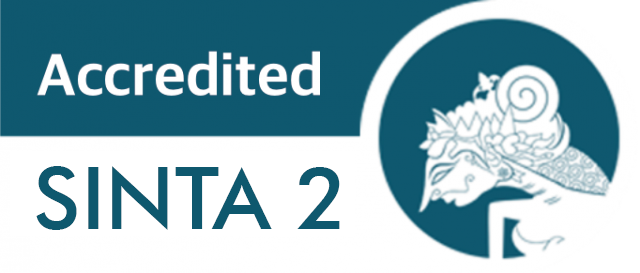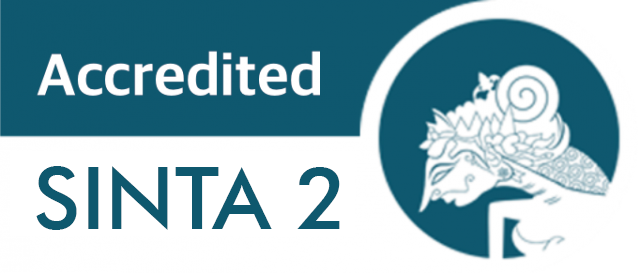Teaching Mathematics Using a Strategy Compatible with the Brain Hemispheres Approach and Its Effect on Developing Information Processing Skills Among Eighth Grade Basic Students
Introduction: This study investigated the effect of a brain hemispheres-compatible teaching strategy on developing information processing skills among eighth-grade mathematics students. The approach aims to engage both left-hemisphere functions (logical reasoning, sequential processing) and right-hemisphere functions (spatial reasoning, holistic thinking) to enhance mathematical learning during the critical developmental period of early adolescence. Methods: The research employed a quasi-experimental design with two equivalent groups at Avro School (2022-2023): an experimental group (30 students) taught using the brain hemispheres strategy and a control group (29 students) taught using traditional instruction. Assessment utilized a validated 25-item test measuring four information processing skills: summarization, application, pattern recognition, and interpretation. The experimental intervention followed six phases: preparation, engagement, learning design, acquisition, memory formation, and functional integration. Results: Statistical analysis revealed significant differences favoring the experimental group (t=5.988, p<0.05) with a very large effect size (η²=0.38). The experimental group showed significant improvement across all four information processing skills with effect sizes ranging from 1.19 to 2.19. Conclusion: The brain hemispheres-compatible teaching strategy proved highly effective in developing students’ mathematical information processing skills by creating organized mental frameworks that facilitate knowledge integration and cognitive development.
Introduction
Mathematics education plays a crucial role in developing students' cognitive abilities and problem-solving skills. In recent years, there has been growing interest in applying neuroscience findings to educational practices, particularly in mathematics instruction[1]. The brain hemispheres approach aims to engage both left and right hemispheres in the learning process, based on understanding that different cognitive functions are associated with different brain regions and optimal learning occurs when both hemispheres are engaged[2]. Recent studies have shown that language proficiency and cultural factors can significantly impact students' mathematical learning and information processing skills, suggesting a need for more comprehensive approaches to mathematics education[3].
The brain hemispheres approach has gained attention due to its potential to enhance students' information processing skills, which involves the ability to perceive, analyze, and manipulate mathematical concepts and relationships[4]. Research indicates that traditional mathematics instruction often emphasizes left-hemisphere functions (logical reasoning and sequential processing) while underutilizing right-hemisphere functions (spatial reasoning and holistic thinking)[5]. This imbalance may limit students' ability to fully engage with mathematical concepts and develop comprehensive problem-solving strategies.
Several studies have demonstrated the effectiveness of brain-based learning strategies. Ozgen and Alkan[6]found that brain-based learning activities significantly improved high school students' mathematics achievement and attitudes. Mekarina and Ningsih[7]reported positive effects on students' mathematical connection abilities, while Noureen, Awan, and Fatima[37]demonstrated significant improvements in seventh-grade mathematics performance. Suarsana et al.[40]provided evidence for brain-compatible teaching strategies in enhancing conceptual understanding of geometric concepts.
Neuroimaging studies have provided crucial insights into mathematical cognition. Dehaene et al.[12]identified three parietal circuits involved in number processing, while Ansari[13]explored how developmental processes shape neural representations of numbers. The development of mathematical skills involves complex interactions between domain-general cognitive abilities and domain-specific mathematical skills[4][14]. Matejko and Ansari[15]demonstrated associations between arithmetic and basic numerical processing in children's brains, complementing Price et al.'s[16]findings that early arithmetic skills predict later mathematical achievement.
Recent meta-analyses by Arsalidou et al.[28]and Kaufmann et al.[36]have provided comprehensive insights into how different mathematical tasks engage various brain regions and how these patterns develop over time. The role of spatial abilities in mathematical cognition has gained attention, with Newcombe et al.[9]highlighting the intertwined development of spatial and numerical cognition. Additionally, research has revealed shared neural resources between linguistic and mathematical operations[29], emphasizing the importance of integrated approaches to mathematics instruction.
The eighth grade represents a critical period for mathematical skill development, as students aged 13-14 transition from concrete to abstract mathematical reasoning[8][9]. During early adolescence, students undergo significant cognitive changes and establish foundational skills for advanced mathematical thinking. Longitudinal studies have revealed dynamic brain development patterns, with Qin et al.[24]demonstrating hippocampal-neocortical functional reorganization underlying cognitive development, and Rosenberg-Lee et al.[25]showing significant maturational changes in neural activity patterns between grades.
The emotional aspects of mathematical learning have also received attention. Suárez-Pellicioni et al.[19]reviewed the cognitive consequences and neural bases of math anxiety, while Lyons and Beilock[20]demonstrated that math anxiety could be separated from math performance at the neural level. This research emphasizes the importance of creating supportive learning environments during this critical developmental period.
Despite promising research on brain-based learning, several gaps remain. First, while studies have shown general benefits of brain-based approaches, there is limited research specifically examining brain hemispheres-compatible strategies on information processing skills in mathematics. Second, most existing studies focus on general mathematical achievement rather than specific cognitive processes like information processing skills. Third, the application of neuroscientific insights to educational practice remains challenging[26], with factors such as lack of teacher training, time constraints, and adherence to traditional curricula hindering adoption of innovative teaching strategies[10].
Recent technological advances offer new opportunities for investigation. Artemenko et al.[27]used functional near-infrared spectroscopy (fNIRS) to study neural correlates of mental arithmetic in naturalistic educational settings, while research on digital learning tools has provided insights into different formats of numerical representation[31]. Cultural influences on mathematical cognition have also been identified as important factors requiring consideration[32].
The integration of metacognitive strategies has shown promise, with Houdé et al.[33]exploring neural correlates of metacognitive processes in problem-solving. Furthermore, research on learning disabilities has advanced understanding of neurobiological underpinnings, with Ashkenazi et al.[34]comparing mathematics and reading disabilities, and De Smedt et al.[35]investigating how numerical magnitude processing skills relate to individual differences in mathematical abilities.
The current study addresses these gaps by investigating the impact of a teaching strategy compatible with the brain hemispheres approach on developing information processing skills among eighth-grade students in mathematics. This focus on a specific age group during a critical developmental period, combined with emphasis on particular cognitive processes, fills an important void in the literature.
The research aims to design a teaching strategy compatible with the brain hemispheres approach and investigate its effect on developing information processing skills among eighth-grade female students in mathematics. Two null hypotheses were formulated: (1) there is no statistically significant difference at the 0.05 level between mean scores of information processing skills development for students in the experimental group versus the control group, and (2) there is no statistically significant difference at the 0.05 level between pre-test and post-test mean scores for the experimental group.
The
D. Ansari, B. De Smedt, and R. Grabner, “Neuroeducation – A Critical Overview of An Emerging Field,” Neuroethics, vol. 5, pp. 1–13, 2011, doi: 10.1007/s12152-011-9119-3.
D. Sousa and R. Risley, “How the Brain Learns Mathematics”.
S. Ali, “Ambiguous Loss, Boundary Ambiguity, and English Learning: How Immigrants’ Functionality is Impacted by Language Proficiency,” 2020, [Online]. Available: https://scholarworks.bellarmine.edu/tdc/94/%0Ahttps://scholarworks.bellarmine.edu/cgi/viewcontent.cgi?article=1106&context=tdc
L. Cragg and C. Gilmore, “Skills underlying mathematics: The role of executive function in the development of mathematics proficiency,” Trends Neurosci. Educ., vol. 3, 2014, doi: 10.1016/j.tine.2013.12.001.
J. Boaler, L. Chen, C. Williams, and M. Cordero, “Seeing as Understanding: The Importance of Visual Mathematics for our Brain and Learning,” J. Appl. Comput. Math., vol. 05, 2016, doi: 10.4172/2168-9679.1000325.
K. Özgen and H. Alkan, “The Effects of Learning Activities Corresponding with Students’ Learning Styles on Academic Success and Attitude within the Scope of Constructivist Learning Approach: The Case of the Concepts of Function and Derivative,” Turkish J. Comput. Math. Educ., vol. 5, p. 1, 2014, doi: 10.16949/turcomat.35299.
M. Mekarina and Y. Ningsih, “The Effects of Brain Based Learning Approach on Motivation and Students Achievement in Mathematics Learning,” J. Phys. Conf. Ser., vol. 895, p. 12057, 2017, doi: 10.1088/1742-6596/895/1/012057.
G. Noureen, R.-U.-N. Awan, and H. Fatima, “Effect of Brain-based Learning on Academic Achievement of VII Graders in Mathematics Effect of Brain-based Learning on achievement of VII Graders 86,” 2017.
I. M. Suarsana, N. Widiasih, and I. N. Suparta, “The Effect of Brain Based Learning on Second Grade Junior Students’ Mathematics Conceptual Understanding on Polyhedron,” J. Math. Educ., vol. 9, 2017, doi: 10.22342/jme.9.1.5005.145-156.
S. Dehaene, M. Piazza, P. Pinel, and L. Cohen, “Three Parietal Circuits for Number Processing,” Cogn. Neuropsychol., vol. 20, pp. 487–506, 2003, doi: 10.1080/02643290244000239.
D. Ansari, “Effects of development and enculturation on number representation in the brain,” Nat. Rev. Neurosci., vol. 9, pp. 278–291, 2008, doi: 10.1038/nrn2334.
V. Menon, “Working memory in children’s math learning and its disruption in dyscalculia,” Curr. Opin. Behav. Sci., vol. 10, 2016, doi: 10.1016/j.cobeha.2016.05.014.
A. Matejko and D. Ansari, “The neural association between arithmetic and basic numerical processing depends on arithmetic problem size and not chronological age,” Dev. Cogn. Neurosci., vol. 37, 2019, doi: 10.1016/j.dcn.2019.100653.
G. Price, M. Mazzocco, and D. Ansari, “Why Mental Arithmetic Counts: Brain Activation during Single Digit Arithmetic Predicts High School Math Scores,” J. Neurosci., vol. 33, pp. 156–163, 2013, doi: 10.1523/JNEUROSCI.2936-12.2013.
M. Arsalidou, M. Pawliw-Levac, M. Sadeghi, and J. Pascual-Leone, “Brain areas needed for numbers and calculations in children: Meta-analyses of fMRI studies,” Dev. Cogn. Neurosci., vol. 30, 2017, doi: 10.1016/j.dcn.2017.08.002.
L. Kaufmann, G. Wood, O. Rubinsten, and A. Henik, “Meta-Analyses of Developmental fMRI Studies Investigating Typical and Atypical Trajectories of Number Processing and Calculation,” Dev. Neuropsychol., vol. 36, pp. 763–787, 2011, doi: 10.1080/87565641.2010.549884.
N. S. Newcombe, S. C. Levine, and K. S. Mix, “Thinking about quantity: the intertwined development of spatial and numerical cognition.,” Wiley Interdiscip. Rev. Cogn. Sci., vol. 6, no. 6, pp. 491–505, 2015, doi: 10.1002/wcs.1369.
T. Nakai and K. Sakai, “Neural Mechanisms Underlying the Computation of Hierarchical Tree Structures in Mathematics,” PLoS One, vol. 9, p. e111439, 2014, doi: 10.1371/journal.pone.0111439.
W. Fias, V. Menon, and D. Szűcs, “Multiple components of developmental dyscalculia,” Trends Neurosci. Educ., vol. 2, 2013, doi: 10.1016/j.tine.2013.06.006i.
S. Qin, S. Cho, T. Chen, M. Rosenberg-Lee, D. Geary, and V. Menon, “Hippocampal-neocortical functional reorganization underlies children’s cognitive development,” Nat. Neurosci., vol. 17, 2014, doi: 10.1038/nn.3788.
M. Rosenberg-Lee, M. Barth, and V. Menon, “What difference does a year of schooling make? Maturation of brain response and connectivity between 2nd and 3rd grades during arithmetic problem solving,” Neuroimage, vol. 57, no. 3, p. 796—808, Aug. 2011, doi: 10.1016/j.neuroimage.2011.05.013.
M. Suarez Pellicioni, M. Núñez-Peña, and À. Colomé, “Math anxiety: A review of its cognitive consequences, psychophysiological correlates, and brain bases,” Cogn. Affect. Behav. Neurosci., vol. 16, 2015, doi: 10.3758/s13415-015-0370-7.
I. Lyons and S. Beilock, “Mathematics Anxiety: Separating the Math from the Anxiety,” Cereb. Cortex, vol. 22, pp. 2102–2110, 2011, doi: 10.1093/cercor/bhr289.
B. Butterworth, S. Varma, and D. Laurillard, “Dyscalculia: From Brain to Education,” Science, vol. 332, pp. 1049–1053, 2011, doi: 10.1126/science.1201536.
J. Bano, Z. Jabeen, and S. Qutoshi, “Perceptions of Teachers about the Role of Parents in Developing Reading Habits of Children to Improve their Academic Performance in Schools,” J. Educ. Educ. Dev., vol. 5, 2018, doi: 10.22555/joeed.v5i1.1445.
C. Artemenko, M. Soltanlou, A.-C. Ehlis, H.-C. Nuerk, and T. Dresler, “The neural correlates of mental arithmetic in adolescents: A longitudinal fNIRS study,” Behav. Brain Funct., vol. 14, 2018, doi: 10.1186/s12993-018-0137-8.
R. Merkley, A. Matejko, and D. Ansari, “Strong causal claims require strong evidence: A commentary on Wang and colleagues,” J. Exp. Child Psychol., vol. 147, pp. 82–163, 2017, doi: 10.1016/j.jecp.2016.07.008.
I. Berteletti, J. Prado, and J. Booth, “Children with mathematical learning disability fail in recruiting verbal and numerical brain regions when solving simple multiplication problems,” Cortex, vol. 57, 2014, doi: 10.1016/j.cortex.2014.04.001.
O. Houdé, S. Rossi, A. Lubin, and J. Marc, “Mapping numerical processing, reading, and executive functions in the developing brain: An fMRI meta-analysis of 52 studies including 842 children,” Dev. Sci., vol. 13, pp. 876–885, 2010, doi: 10.1111/j.1467-7687.2009.00938.x.
S. Ashkenazi, J. Black, D. Abrams, F. Hoeft, and V. Menon, “Neurobiological Underpinnings of Math and Reading Learning Disabilities,” J. Learn. Disabil., vol. 46, 2013, doi: 10.1177/0022219413483174.
B. De Smedt, M.-P. Noel, C. Gilmore, and D. Ansari, “How do symbolic and non-symbolic numerical magnitude processing relate to individual differences in children’s mathematical skills? A review of evidence from brain and behavior,” Trends Neurosci. Educ. ISNN 2211-9493, vol. 2, pp. 48-55., 2013, doi: 10.1016/j.tine.2013.06.001.
A. Salem, “Engaging ESP Students with Brain-Based Learning for Improved Listening Skills, Vocabulary Retention and Motivation,” English Lang. Teach., vol. 10, p. 182, 2017, doi: 10.5539/elt.v10n12p182.
Copyright (c) 2025 Azhar Ali Hussein Ibrahim

This work is licensed under a Creative Commons Attribution-ShareAlike 4.0 International License.
1. Copyright of this journal is possession of the Author, by the knowledge of the Editorial Board and Journal Manager, while the moral right of the publication belongs to the author.
2. The journal allows the author(s) to retain publishing rights without restrictions.
3. The articles are published under a Creative Commons Attribution Share-Alike (CC BY-SA) license. Many research funding bodies prefer the CC BY-SA license because it allows for maximum dissemination and re-use of open access materials. Users are free to share (copy, distribute, and transmit) and remix (adapt) the contribution under this license, including for commercial purposes, as long as they attribute the contribution in the manner specified by the author or licensor.
























